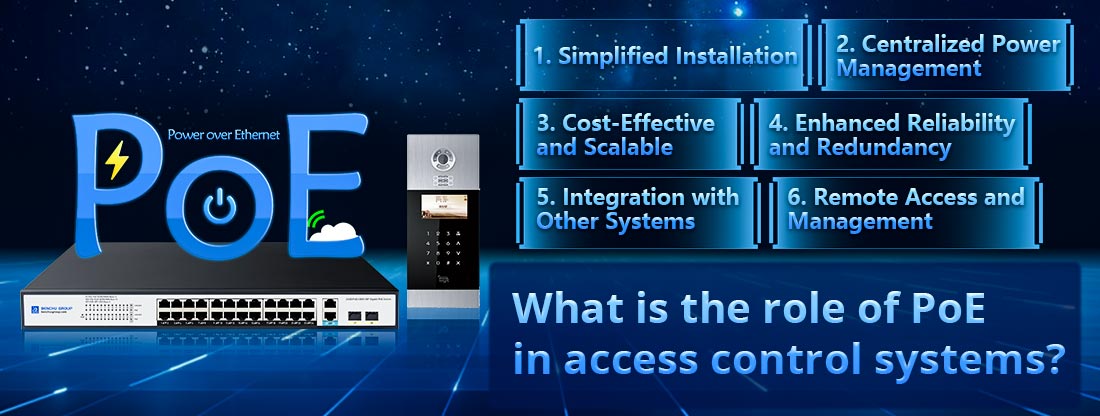
Power over Ethernet (PoE) plays a crucial role in access control systems by streamlining power and data transmission over a single Ethernet cable. Here’s how PoE benefits access control systems:
1. Simplified Installation
--- PoE eliminates the need for separate power wiring, as both power and data are transmitted through the same cable. This reduces the complexity of installation, making it easier and more cost-effective to deploy access control devices like card readers, door controllers, and security cameras.
2. Centralized Power Management
--- PoE allows centralized management of power through network switches. This enables IT administrators to control and monitor power to access control devices remotely, improving system flexibility and maintenance.
3. Cost-Effective and Scalable
--- By using existing network infrastructure, PoE reduces the need for additional electrical wiring, lowering installation costs. It also makes it easier to scale the system by adding new access points without significant infrastructure changes.
4. Enhanced Reliability and Redundancy
--- Many PoE switches support Uninterruptible Power Supply (UPS) systems, providing continuous power to access control systems even during power outages. This ensures the reliability and security of the access control system.
5. Integration with Other Systems
--- PoE facilitates the integration of access control systems with other security solutions, such as IP cameras, intercoms, and alarm systems. This enables a more unified and efficient security system with seamless communication between devices.
6. Remote Access and Management
--- Since PoE-enabled access control devices are connected to the network, administrators can monitor and manage these devices remotely, enhancing security and response capabilities.
PoE not only simplifies the infrastructure but also boosts the reliability and scalability of access control systems, making it a key technology in modern security setups.